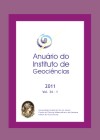Assemblage of Mollusks in the Region of the Ramalho's Swamp, Cabo Frio, RJ: Biological Indicators of The Sea Level Variation During the Holocene
DOI:
https://doi.org/10.11137/2011_2_46-52Abstract
In the coastal plain of the Una river, county of the Cabo Frio, the northern coast of the State of Rio de Janeiro, are found biological evidences of change in relative sea level during the Holocene, represented by dense accumulations and wide distribution composed predominantly of mollusk shells. This paper aims to describe a new occurrence of accumulation of mollusk shells in the region of Ramalho's marsh, coastal plain of the Una river. The study area is located within the Portal de Buzios condominium, Amaral Peixoto Highway (RJ-106) at Km 125 between the coordinates 42º03'29"W and 22 º44'53"S. The survey of altimetry database shells was performed by tracking DGPS Pro Mark 2. To perform the taxonomic analysis, paleoecological, and geochronological were collected approximately 1.75 dm³ of mollusk shells in a trench of 0.50 cm, excavated at the edge of a small dam in the area of the Portal de Búzios condominium. Approximately 100 grams of the specie Anomalocardia brasiliana shells were sent to the absolute dating method radicarbon to Beta Analytic Inc., Miami - USA. Data obtained from a DGPS Pro Mark 2 show an altitude of 0,90 m above actual sea level. Only three species of mollusks were identified in this filing: Anomalocardia brasiliana, Lucina pectinata and Crassostrea rizophorae. A. brasiliana and L. pectinata have not joined infaunal habit, live in muddy or sandy bottoms. C. rizophorae epifaunal habit has stuck, living in rocky and gravel substrata. The three species have water depths ranging from 0 to 30 m depth. Most of the shells found present a low degree of fragmentation and corrosion, indicating little or none transportation. Some shells of L. pectinata and A. brasiliana are articulated, and the shells of C. rizophorae are embedded in the shells of other species. The conventional age of the deposit is 5780 À 70 years BP, calibrated by CALIB 5.0 program in 5997-6333 cal. years BP. These data are similar ages found in deposits along the northern coast of Rio de Janeiro state, Brazil.Downloads
Download data is not yet available.
Downloads
Published
2011-01-01
How to Cite
Cunha, A. M. da (2011) “Assemblage of Mollusks in the Region of the Ramalho’s Swamp, Cabo Frio, RJ: Biological Indicators of The Sea Level Variation During the Holocene”, Anuário do Instituto de Geociências. Rio de Janeiro, BR, 34(2), pp. 46–52. doi: 10.11137/2011_2_46-52.
Issue
Section
não definida
License
This journal is licensed under a Creative Commons — Attribution 4.0 International — CC BY 4.0, which permits use, distribution and reproduction in any medium, provided the original work is properly cited.















